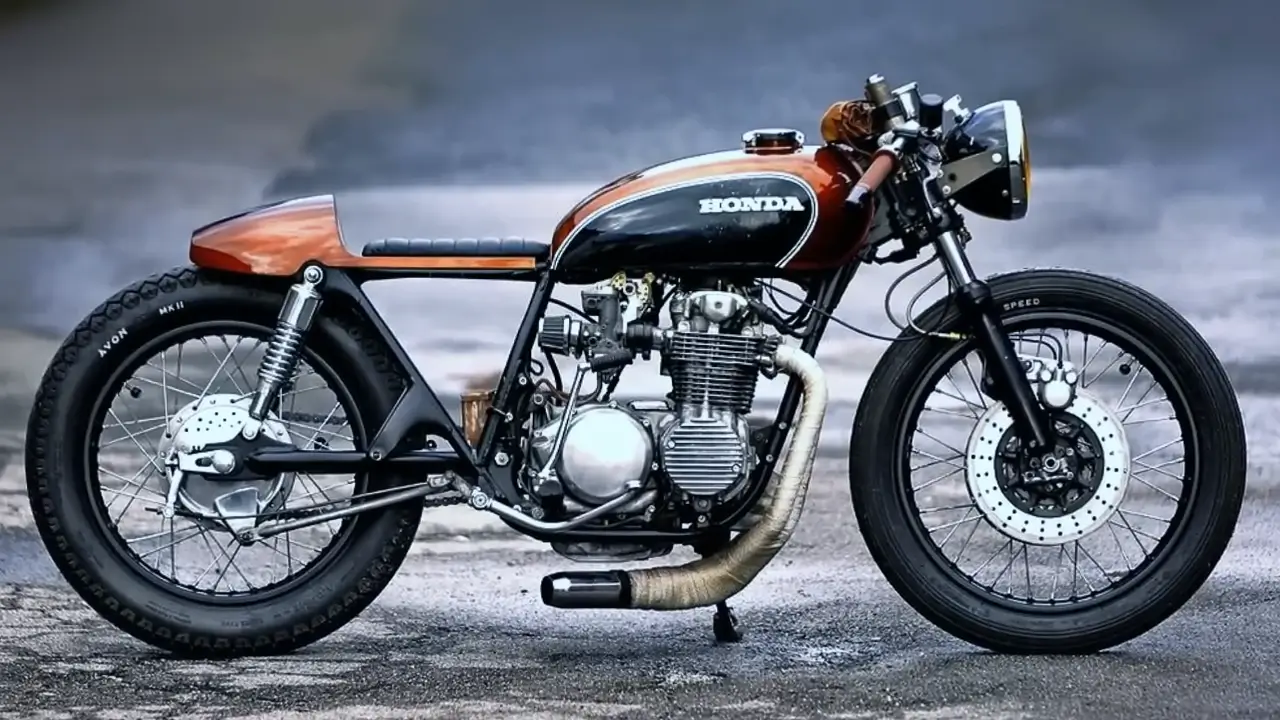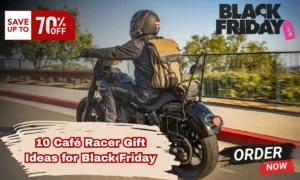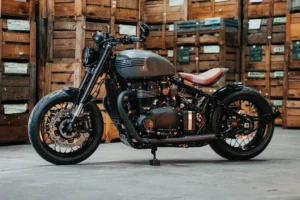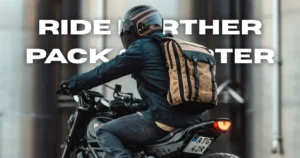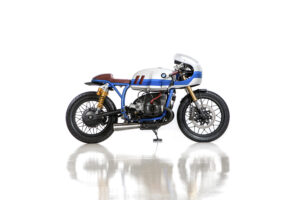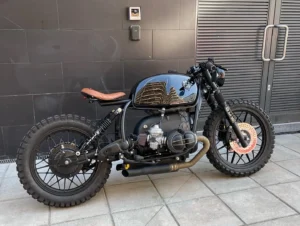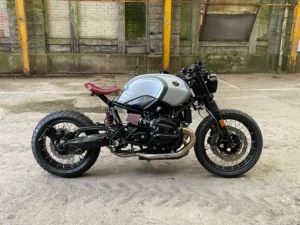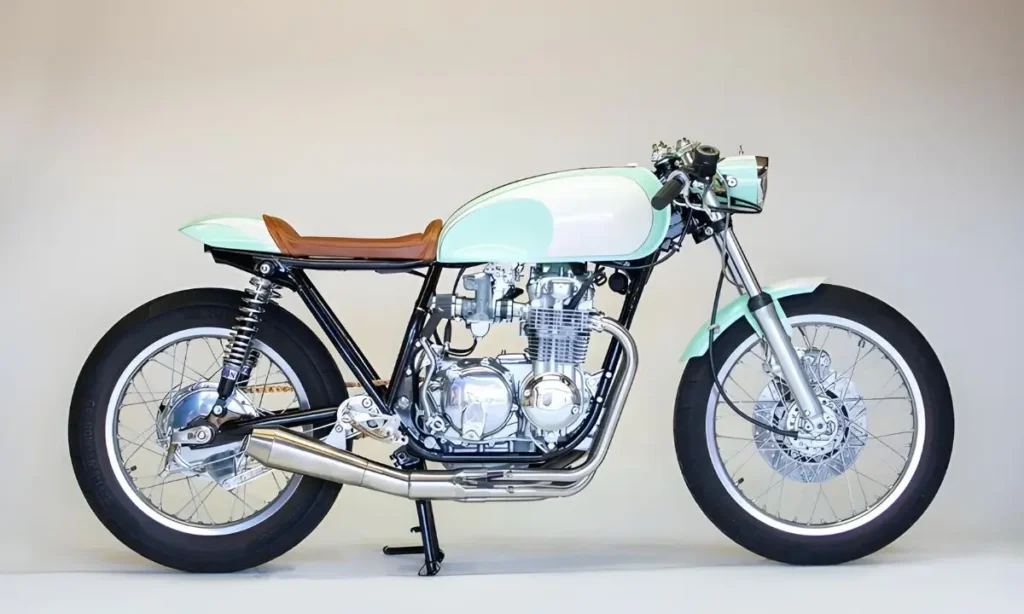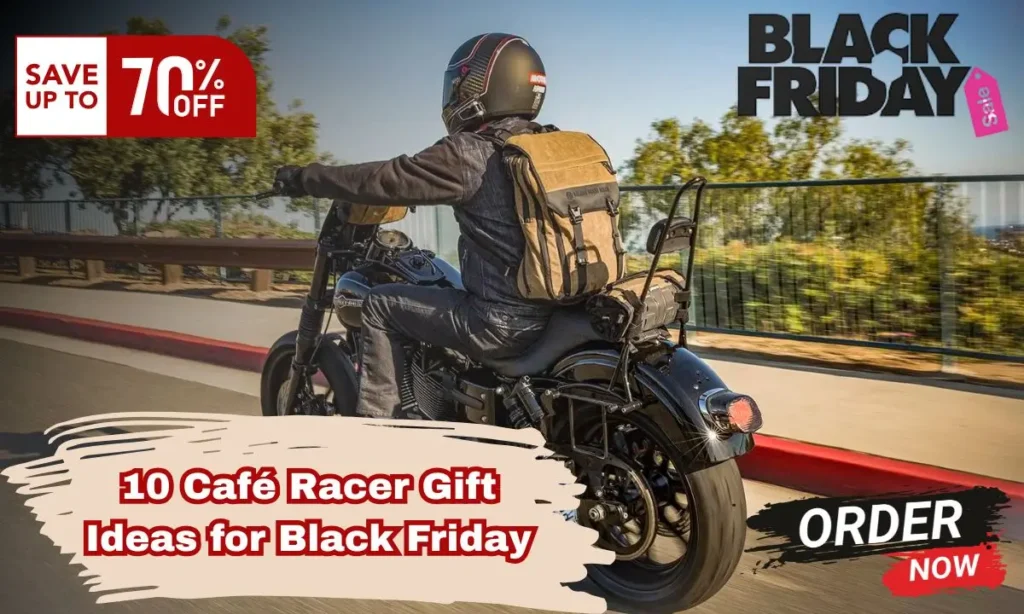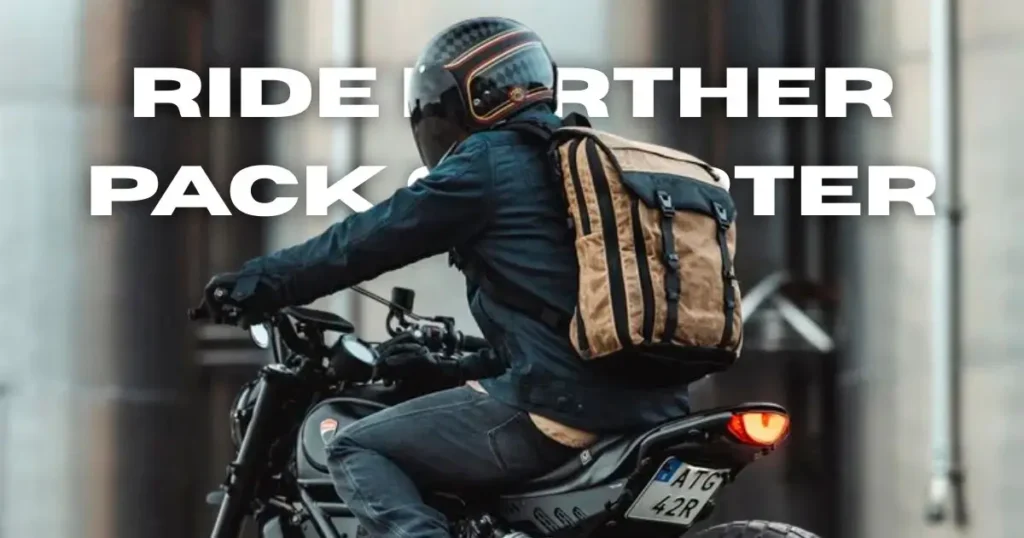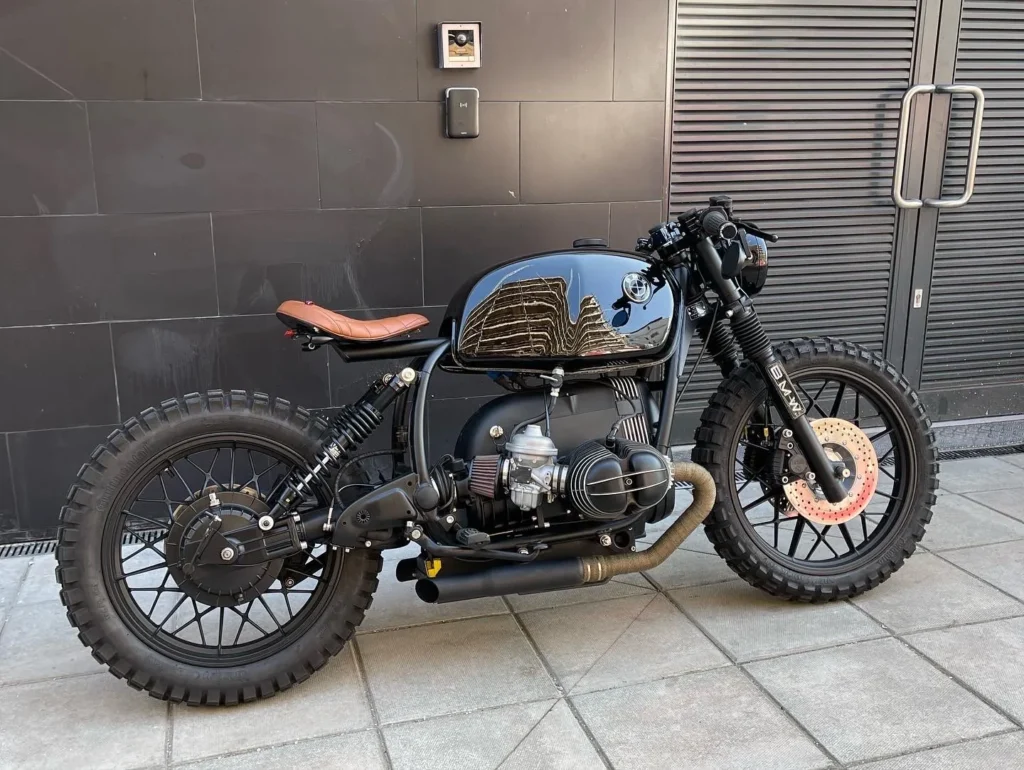Table of Contents
ToggleThe Honda CB500 is a great pick for building a café racer. It has a strong, reliable engine and a simple, flexible design. The CB500 is popular because it offers a good balance of power and ease of use. This guide will show you how to turn a Honda CB500 into a stylish café racer. We’ll cover the key changes you can make, famous builds for inspiration, tips for care, and the rules you need to follow. Whether you’re new to customizing bikes or have experience, this guide will help you get the most out of your Honda CB500 café racer project.
History and Evolution of the Honda CB500
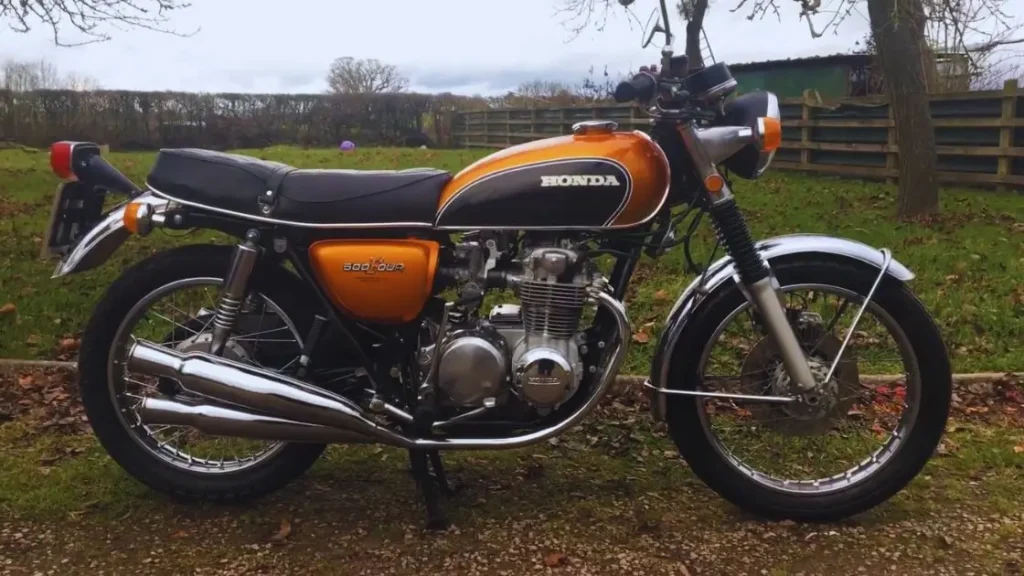
The Honda CB500 was first introduced in 1971. It quickly became a popular model because it was dependable, powerful, and easy to ride. This bike was designed for both new riders and experienced bikers who wanted a motorcycle with good speed and handling.
Key Features and Specifications of the Original Honda CB500
The original Honda CB500 had a 4-cylinder engine, which was rare for its time. This engine made the bike smooth and responsive, perfect for both city rides and highway cruising. Below is a table with the main specifications of the first Honda CB500 model:
| Feature | Specification |
| Engine Type | 4-stroke, Inline-4 |
| Engine Capacity | 498 cc |
| Horsepower | 50 hp at 9,000 rpm |
| Top Speed | 115 mph (185 km/h) |
| Transmission | 5-speed manual |
| Fuel Tank Capacity | 16 liters |
| Curb Weight | 192 kg |
These features made the CB500 a strong competitor against other bikes in the market during the 1970s. Riders loved its smooth engine, easy handling, and the balance between power and comfort.
Changes and Improvements Over Time
Over the years, Honda made several updates to the CB500 model. The goal was to improve performance and make the bike more reliable. Here are some key changes:
- Improved Brakes: Later models had upgraded front disc brakes for better stopping power.
- Enhanced Suspension: The suspension was made stronger to handle rougher roads and provide a smoother ride.
- Styling Updates: The bike’s design became sleeker, with changes to the fuel tank and seat for a more modern look.
These changes kept the CB500 popular even after new models came out. Today, it is still a favorite choice for motorcycle enthusiasts, especially those interested in turning it into a custom cafe racer.
Characteristics of a Cafe Racer
A cafe racer is not just any motorcycle. It has a distinct look and style that sets it apart. The goal of a cafe racer is to be light, fast, and stylish. Riders build these bikes to go fast over short distances, usually on city streets. The design is inspired by the racing bikes of the 1960s.
Key Design Elements of a Cafe Racer
- Low Handlebars:
- Cafe racers often have clip-on or low, straight handlebars. This gives the bike a forward-leaning position, similar to a racing bike. It helps the rider lean into the wind for better aerodynamics.
- Single Seat:
- Most cafe racers have a single, narrow seat. The seat is usually flat and straight, sometimes with a slight bump at the back. This design is for a solo rider, making the bike lighter and giving it a sleek look.
- Slim Fuel Tank:
- The fuel tank on a cafe racer is long and narrow. It often has knee indents, allowing the rider to grip the tank while riding. This helps with control and stability, especially at high speeds.
- Rear-Set Footpegs:
- The footpegs on a cafe racer are moved back, near the rear wheel. This position gives the rider a crouched, racing stance. It may feel different at first, but it helps with balance and control.
- Minimalist Design:
- Cafe racers are stripped-down motorcycles. Builders remove unnecessary parts like large fenders and bulky lights. The focus is on speed and simplicity, not comfort. The bike’s frame and parts are often left exposed for a raw, mechanical look.
Performance Enhancements
- Lightweight Frame: By removing extra parts, cafe racers are much lighter than stock motorcycles. This makes them faster and easier to handle.
- Engine Tuning: Many cafe racers have upgraded engines. Riders often change the exhaust or tune the carburetor for better performance and a louder sound.
- Improved Suspension: Better suspension parts are added for a smoother ride and better handling on tight turns.
The cafe racer style is more than just a look; it’s about creating a bike that feels fast and fun. It’s a mix of form and function, with a design that makes it stand out on the road.
Building a Honda CB500 Cafe Racer
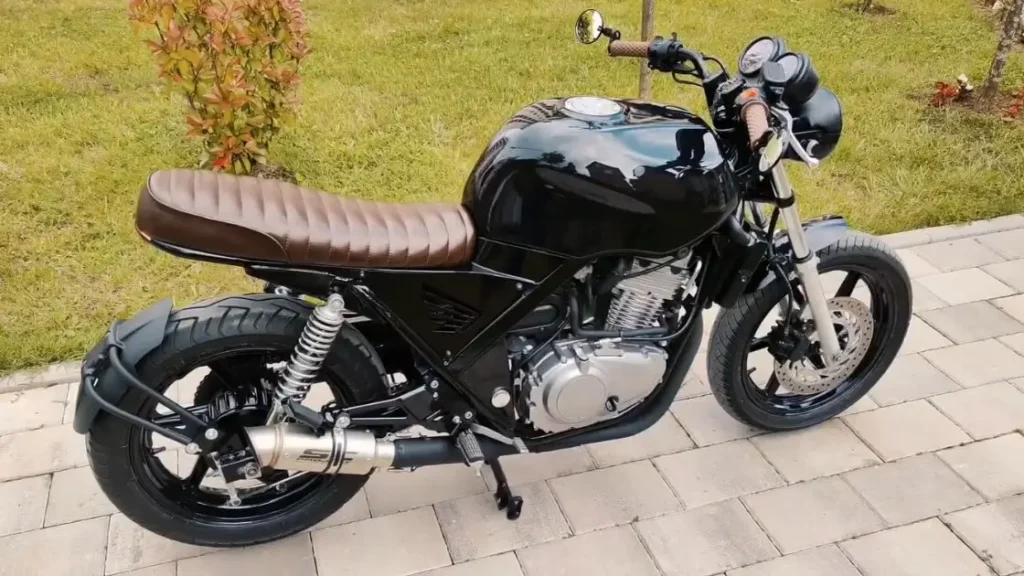
Turning a Honda CB500 into a cafe racer is a project many riders love. The CB500 is a great base because it is reliable, simple, and easy to work on. With the right parts and a bit of creativity, you can build a bike that is unique and exciting to ride.
Choosing the Right Model and Year
Before you start building, it’s important to pick the right CB500 model. The original CB500 from the 1970s is the most popular choice. These models have a strong engine and a classic look. Newer CB500 models can also work, but the older ones have a vintage style that fits better with the cafe racer design.
Essential Modifications and Customizations
When building a cafe racer, you will need to make several key changes. Here are the main modifications to focus on:
- Frame Modifications:
- The frame is the backbone of your build. Many builders trim the rear part of the frame to make it shorter and give it a cleaner look. This helps create the classic cafe racer silhouette.
- Engine Upgrades:
- The stock engine of the CB500 is already strong, but small changes can make it perform even better. You can upgrade the carburetors or change the exhaust system. A free-flowing exhaust not only boosts power but also gives the bike a louder, deeper sound.
- Suspension Upgrades:
- The original suspension may not be suitable for a custom build. Upgrading the front forks and rear shocks will give you a smoother ride. It also improves handling, especially on rough roads or tight turns.
- Custom Seat and Tank:
- The seat and tank are the most visible parts of your cafe racer. A flat, single-seat design is a must. You can buy a custom seat or make one yourself. For the tank, many builders use a slim, vintage-style fuel tank. It should be narrow and have knee indents for a classic look.
- Handlebars and Footpegs:
- Swap the stock handlebars for clip-ons or low, straight bars. This change gives the bike a racing stance. Rear-set footpegs also help create a more aggressive riding position.
- Lighting and Electronics:
- Replace the bulky headlight and taillight with smaller, modern units. Many builders use LED lights for a clean look and better visibility. Simplifying the wiring can also reduce the weight and make the bike look neater.
Tools and Skills Needed
Building a cafe racer requires some basic tools and skills. You will need wrenches, screwdrivers, and a few power tools like a drill. Welding skills are helpful, especially for frame modifications. If you’re new to bike building, start with simple changes and learn as you go. There are many online guides and videos that can help.
Time and Cost Considerations
The time and cost of your build depend on how much work you plan to do. A basic build might take a few weeks and cost around $1,500 to $3,000, depending on the parts you choose. If you want a more detailed custom job, it could take months and cost much more. It’s important to plan your budget and timeline before you start.
Building a Honda CB500 cafe racer can be a rewarding project. It’s a chance to create a bike that is truly your own. With careful planning and the right parts, you can build a cafe racer that looks great and rides even better.
Read More: [The Legendary Honda CB 750 Cafe Racer | A Complete Guide]
Read More: [The Honda CB550 Cafe Racer | Your Complete Guide to Customizing and Building This Legendary Bike]
Read More: [Honda CB350 Cafe Racer | Complete Customization Guide, Performance Upgrades, and Expert Maintenance Tips]
Notable Honda CB500 Cafe Racer Builds
The Honda CB500 is a favorite choice for custom motorcycle builders. Many well-known builders and workshops have created stunning cafe racers based on this model. These bikes often become popular because they showcase creativity, style, and smart engineering.
1. Classic CB500 by Duke Motorcycles
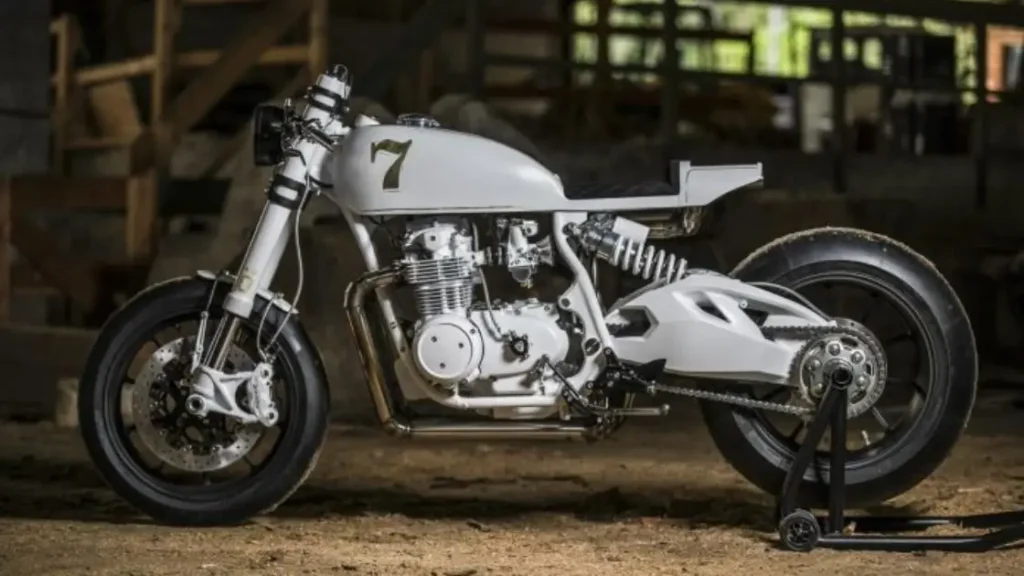
Duke Motorcycles is famous for creating sleek and stylish cafe racers. One of their best builds is a classic Honda CB500. This bike features a minimal design with a black frame and polished metal parts. The builder used clip-on handlebars, a custom leather seat, and a slim fuel tank. The exhaust is custom-made, giving the bike a deep, powerful sound. This build is admired for its clean look and smooth performance.
2. Alchemy Motorcycles’ Modern Twist

Image souce: bikebound
Alchemy Motorcycles took a different approach with their Honda CB500 cafe racer. Instead of sticking to the classic look, they gave the bike a modern twist. The bike has a glossy grey tank and bright LED lights. The builder upgraded the suspension and added a powerful new braking system. The engine was tuned for better speed and acceleration. This build combines the vintage charm of the CB500 with modern features, making it a great bike for both city streets and open roads.
These notable builds show just how versatile the Honda CB500 can be. Whether you prefer a classic look or want to add modern features, the CB500 provides a great base for a cafe racer project. Each build has its own unique style and story, inspiring others to start their own custom projects.
Maintenance and Care for a CB500 Cafe Racer
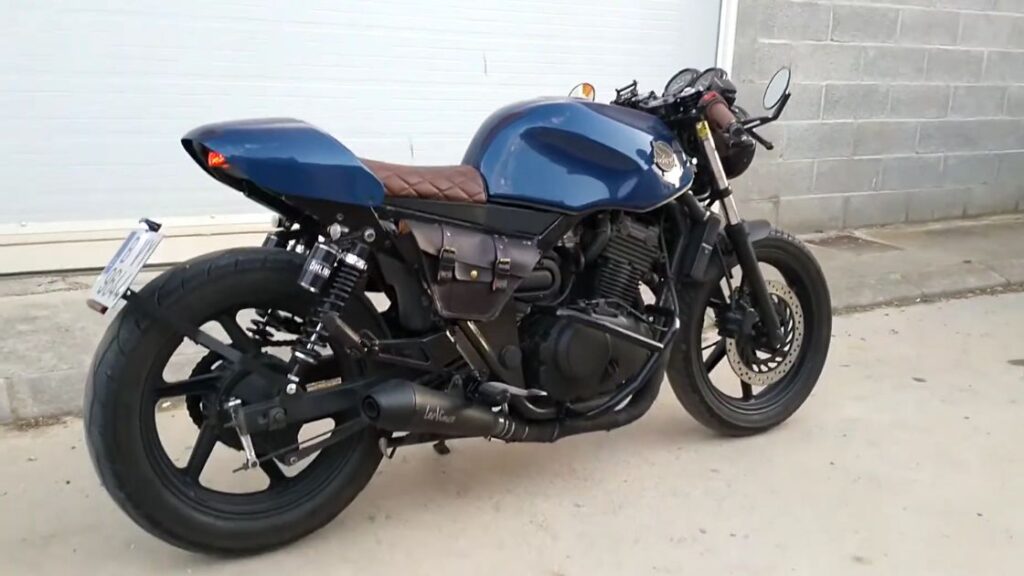
Keeping your Honda CB500 cafe racer in top shape is important. Regular maintenance not only helps your bike run better but also makes it safer and more fun to ride. Here are some key areas to focus on.
1. Regular Oil Changes
The engine is the heart of your bike. Changing the oil is one of the easiest ways to keep it healthy. Use high-quality motorcycle oil and change it every 3,000 miles or every 6 months, whichever comes first. This will help keep the engine running smoothly and prevent damage.
2. Check the Brakes
Good brakes are crucial for your safety. Inspect the brake pads often, especially if you ride a lot. Worn-out brake pads should be replaced immediately. Check the brake fluid level and top it up if needed. If the brakes feel soft or slow to respond, it might be time to bleed the brake lines.
3. Inspect the Tires
Tires are your bike’s contact with the road. Check the tire pressure before each ride. Proper pressure improves handling and makes your ride smoother. Also, look for any cracks or worn-out tread. If the tires are old or damaged, replace them right away.
4. Clean and Adjust the Chain
The chain needs regular cleaning and lubrication. A dirty chain can cause problems and wear out quickly. Use a chain cleaner and a soft brush to remove dirt. After cleaning, apply chain lube to keep it moving freely. Also, check the chain tension. It should have a bit of slack but not too much. If it’s too loose, adjust it to the correct tension.
5. Check the Battery
The battery can drain quickly if not maintained. Make sure the terminals are clean and free of corrosion. If you don’t ride your bike often, consider using a trickle charger to keep the battery charged. This will help you avoid surprises when you’re ready to ride.
6. Look Over the Electrical System
Custom cafe racers often have new lights and electrical parts. Check all the lights, including the headlight, brake light, and turn signals, to make sure they work well. If you notice flickering lights or other electrical issues, it might be a loose connection or a weak battery.
7. Tighten Nuts and Bolts
Cafe racers often have parts that can come loose because of vibrations. Go over the bike and tighten any loose nuts and bolts. This is especially important after a long ride or if you’ve just installed new parts.
8. Regular Cleaning
Keep your bike clean to prevent rust and dirt buildup. Wipe down the frame, wheels, and engine with a soft cloth. Use a gentle cleaner for painted parts. Regular cleaning not only keeps the bike looking good but also helps you spot any potential issues early.
9. Schedule a Tune-Up
Even if you do regular maintenance, it’s a good idea to have a professional tune-up once a year. A mechanic can check the engine, carburetor, and other parts you might miss. This helps keep your bike running at its best.
Riding Experience and Performance
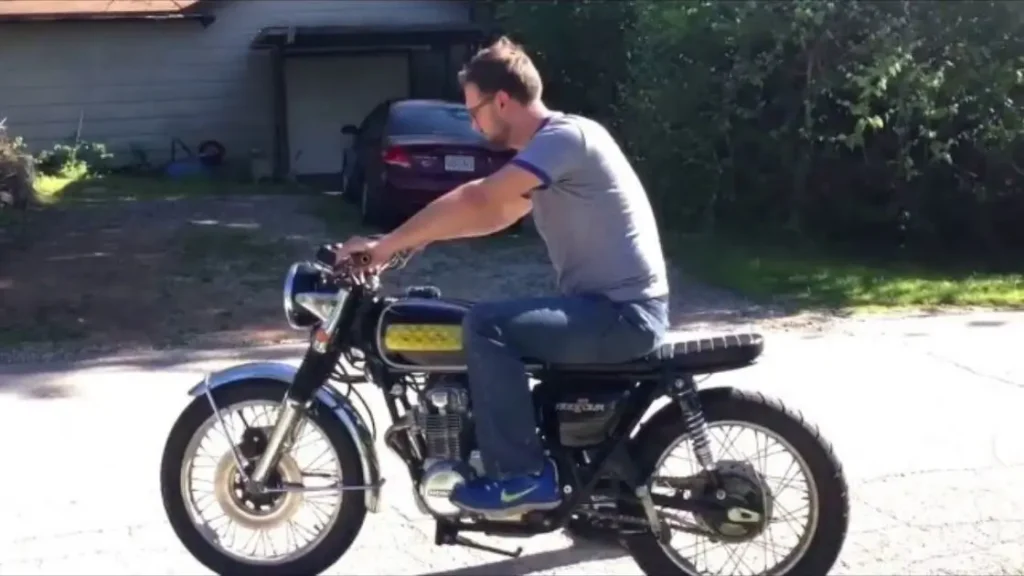
Riding a Honda CB500 cafe racer is an exciting experience. The bike is known for its balance, speed, and smooth handling. It’s a motorcycle that feels great whether you’re cruising through the city or taking a long ride on country roads.
1. Handling and Comfort
The Honda CB500 is lightweight and easy to handle. It feels stable, even at high speeds. The low handlebars and rear-set footpegs give the rider a forward-leaning position. This stance is typical for cafe racers, making it feel like a racing bike. It may take some time to get used to this position, but once you do, it feels very engaging.
The custom suspension, often upgraded in cafe racer builds, makes the bike handle bumps and corners well. The ride might feel firm, but it gives you better control, especially on twisty roads.
2. Speed and Acceleration
The CB500 may not be the fastest bike, but it has plenty of power for a cafe racer. The 4-cylinder engine delivers a smooth burst of speed when you twist the throttle. You can feel the power building as the engine revs up. With some basic engine tuning and a free-flow exhaust, you can make it even quicker. The bike has a good balance between speed and control, which makes it fun for spirited rides.
3. Suitability for Different Roads
The CB500 cafe racer is best for paved roads and city streets. It is not built for off-road trails or long highway tours. The bike shines in urban environments where quick acceleration and sharp handling matter most. You can easily weave through traffic, and the low stance gives you confidence on tight turns.
If you like taking weekend rides on back roads, the CB500 is also a great choice. Its strong engine and responsive handling make it a joy to ride on winding country roads. Just be aware that the firm seating and racing position may not be comfortable for very long trips.
4. Sound and Feel
One of the best parts of riding a cafe racer is the sound. A custom exhaust system on a Honda CB500 gives a deep, throaty roar. It’s a sound that grabs attention and makes the bike feel alive. The vibrations from the engine, combined with the roar of the exhaust, give a raw, mechanical feel. This is part of the cafe racer charm—feeling connected to the machine.
5. Safety Tips for Riding
Riding a custom cafe racer can be thrilling, but safety is key. The low, racing stance might take time to get used to. Start with shorter rides until you feel comfortable. Make sure your brakes, lights, and tires are in good shape before every ride. Always wear a helmet and protective gear, even for short trips.
The Honda CB500 cafe racer offers a unique riding experience that is hard to match. It combines speed, style, and agility in a way that makes every ride enjoyable. Whether you’re a new rider or an experienced biker, this motorcycle can give you an unforgettable ride.
Community and Events
The Honda CB500 cafe racer has a strong and passionate community. Many people love these bikes for their classic style and the chance to customize them. The cafe racer scene is full of riders who enjoy building, sharing, and riding their unique bikes. It’s a welcoming group where you can find help, advice, and inspiration.
1. Online Forums and Groups
There are many online forums and social media groups for cafe racer enthusiasts. These are great places to ask questions, share your build progress, and get feedback. Popular forums like Honda Twins Forum have dedicated sections for the CB500. Here, you can find tips on repairs, customization ideas, and stories from other riders.
On social media, platforms like Instagram and Facebook have large communities of cafe racer fans. You can follow hashtags like #CB500CafeRacer to see custom builds from all over the world. These platforms are perfect for finding inspiration and connecting with other builders.
2. Local and International Meetups
Cafe racer meetups are a great way to see other custom bikes and meet fellow enthusiasts. In many cities, there are regular motorcycle gatherings where people show off their custom builds. Events like Bike Nights and Cars & Coffee often welcome cafe racers, and you can see many unique Honda CB500 models at these meets.
Internationally, there are bigger events like the Distinguished Gentleman’s Ride. This is a charity ride where cafe racer owners dress in vintage outfits and ride together. It happens in many countries and attracts thousands of riders. It’s a fun way to be part of the global cafe racer community while supporting a good cause.
3. Workshops and Clubs
If you are new to building or want to learn more, local workshops can be very helpful. Some motorcycle shops offer classes on basic repairs, customization, and maintenance. Joining a local motorcycle club can also be a great idea. Clubs often organize rides, workshops, and social events where you can meet other riders who share your interests.
Legal and Insurance Considerations
Building and riding a Honda CB500 cafe racer is exciting, but it’s important to know the legal rules. Custom bikes often have modifications that may not meet standard regulations. Understanding the laws can help you avoid fines and keep your bike safe on the road.
1. Registration and Inspection
When you make changes to your Honda CB500, you may need to update its registration. In some places, modified bikes require a special inspection to ensure they are roadworthy. This is especially true if you change major parts like the frame or engine. Contact your local Department of Motor Vehicles (DMV) or transport office to find out the specific rules.
During the inspection, officials may check:
- Lighting: Headlights, brake lights, and turn signals must meet safety standards.
- Noise Level: Custom exhaust systems must comply with noise regulations.
- License Plate: The plate should be visible and properly mounted.
2. Insurance for Custom Bikes
Insuring a custom cafe racer can be different from insuring a stock motorcycle. Standard insurance policies may not cover all modifications. It’s important to talk to your insurance provider and explain the changes you made. Some companies offer custom bike insurance, which covers the value of upgraded parts and accessories.
When getting insurance, consider the following:
- Agreed Value Coverage: This type of policy sets a specific value for your bike based on its custom parts. It protects you if your bike is stolen or damaged.
- Liability Coverage: This covers damage or injury you may cause to others while riding.
- Comprehensive Coverage: This protects against non-collision events like theft or fire.
3. Safety Equipment Requirements
In many places, there are rules about what safety gear you must wear. A helmet is required in most states and countries. Make sure your helmet meets safety standards, such as DOT or ECE certification. Some areas also require riders to wear gloves, boots, and a jacket for extra protection.
Custom bikes like cafe racers often have smaller mirrors and lights. Make sure these parts meet the legal size and visibility requirements. If your bike doesn’t have enough visibility, it can be dangerous and might not pass inspection.
4. Compliance with Emission Standards
Custom exhaust systems are popular on cafe racers, but they can affect your bike’s emissions. Many regions have strict emission standards. Using aftermarket exhausts without proper tuning can lead to higher emissions, which might make your bike fail an inspection. To avoid this, consider using exhaust systems that are EPA-approved or meet local emission guidelines.
5. Understanding Local Laws
Motorcycle laws can vary widely by state or country. It’s important to research and understand the specific regulations where you live. Some places have strict rules about modifications, while others are more lenient. If you plan to ride your bike across state or country borders, be sure to check the rules in each area.
Conclusion
The Honda CB500 is a fantastic choice for building a cafe racer. Its strong engine, classic design, and ease of customization make it a favorite among motorcycle enthusiasts. Turning a CB500 into a cafe racer is not just about changing its look; it’s about creating a bike that feels special and personal.
Throughout this article, we covered everything you need to know—from the history of the CB500 and its key features to the process of building your own custom cafe racer. We looked at notable builds for inspiration and discussed important tips for maintenance and care. We also explored the riding experience, community, and legal aspects of owning a modified bike.
Building a Honda CB500 cafe racer is more than a project; it’s a journey. It’s a chance to bring an old bike back to life and make it your own. Whether you choose a classic vintage style or a modern twist, the end result is a motorcycle that stands out and turns heads. It’s a bike that offers a unique riding experience and connects you to a community of riders who share your passion.
If you’re thinking about starting your own build, take your time and enjoy the process. Research your parts, plan your design, and work carefully. Every change you make brings you closer to creating the bike of your dreams. And once it’s finished, you’ll have a one-of-a-kind cafe racer that is a joy to ride and a piece of motorcycle history.
In the end, the Honda CB500 cafe racer is more than just a bike; it’s a statement of style, speed, and creativity. It’s a tribute to the classic spirit of the cafe racer culture. So, get out there, start building, and enjoy the ride.
FAQs
What are the main differences between a standard Honda CB500 and a CB500 cafe racer?
A standard Honda CB500 is a regular motorcycle for general riding. A CB500 cafe racer is a custom version. It has low handlebars, a single seat, and improved performance. The style is more retro and simple, focusing on speed and looks.
Can I turn a modern Honda CB500 into a cafe racer?
Yes, you can turn a modern Honda CB500 into a cafe racer. However, older models are usually better. They have a classic design that fits the traditional cafe racer look.
How much does it cost to build a Honda CB500 cafe racer?
The cost depends on the bike’s condition, the parts you pick, and if you do the work yourself. Most projects cost between $1,500 and $5,000.
How long does it take to build a Honda CB500 cafe racer?
The time it takes depends on your skills and the project’s difficulty. A simple build may take a few weeks. A more detailed project can take several months.
Are there legal rules for riding a custom Honda CB500 cafe racer?
Yes, there are legal rules for custom bikes. Your Honda CB500 cafe racer must meet safety standards. Check local rules for noise, emissions, and lights to be sure your bike is legal.
What maintenance does a Honda CB500 cafe racer need?
Maintenance can be tricky, especially for older models. You need to find the right parts and make sure your custom changes don’t affect how the bike runs. Regular checks of oil, brakes, and tires are important.
Can I use a Honda CB500 cafe racer for daily rides?
You can use it daily, but cafe racers are not as comfortable as regular bikes. The riding position is more aggressive. Think about your daily route and comfort before using it every day.
Where can I find parts for a Honda CB500 cafe racer?
You can find parts at online stores, local bike shops, and salvage yards. Online forums and motorcycle groups are also good places to ask for advice and find parts.

